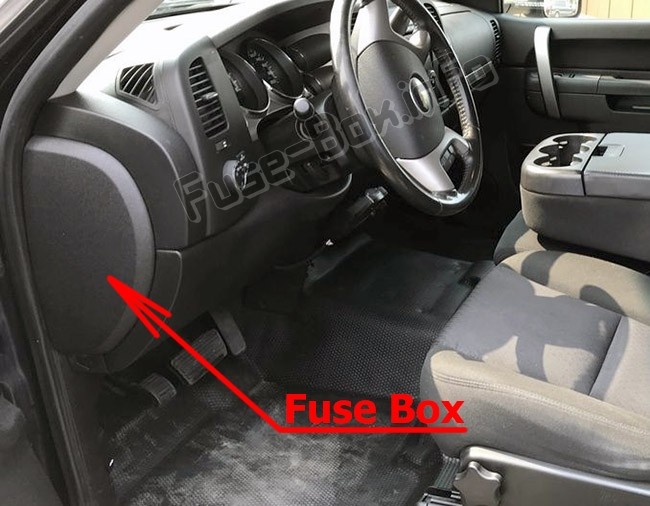The OBD2 (On-Board Diagnostics) port on your 2013 Chevy Silverado 2500 is your gateway to understanding your truck’s health. It allows you to connect a diagnostic scanner to retrieve trouble codes, monitor vehicle performance, and troubleshoot issues. But what happens when your OBD2 port isn’t working? The culprit could be a blown fuse. This guide will help you locate and identify the OBD2 fuse on your 2013 Chevy Silverado 2500.
The OBD2 port itself doesn’t have a dedicated fuse. Its power is often drawn from other circuits within the vehicle. On the 2013 Chevy Silverado 2500, the fuse related to the OBD2 port’s functionality is typically associated with the cigarette lighter or accessory power outlets.
To find this fuse, you’ll need to check two fuse boxes:
1. Instrument Panel Fuse Box:
- Location: This fuse box is located on the driver’s side of the instrument panel, behind a cover. You may need to open the driver’s side door for easier access.
- Relevant Fuses: Look for fuses labeled “Cigarette Lighter” or “Accessory Power Outlets.” In the 2013 Silverado 2500, these are often numbered #16 (Accessory Power Outlets) and potentially #53 (Cigarette Lighter, Accessory Power Outlet) in the underhood fuse box. Consult your owner’s manual for the precise location and label on your specific model.
2. Engine Compartment Fuse Box:
- Location: This fuse box is located under the hood, usually near the battery.
- Relevant Fuse: Here you will likely find a fuse specifically labeled #53 (Cigarette Lighter, Accessory Power Outlet).
Identifying a Blown Fuse:
Once you’ve located the potential fuses, inspect them carefully. A blown fuse will typically have a broken filament or a darkened glass window.
Replacing a Blown Fuse:
If you find a blown fuse, replace it with a new fuse of the same amperage rating. The amperage rating is printed on the fuse itself. Using a fuse with a different rating can damage the electrical system.
If the problem persists:
If replacing the fuse doesn’t solve the issue, there might be a more complex electrical problem. In this case, it’s recommended to consult a qualified mechanic for further diagnosis and repair. A professional diagnostic scan can pinpoint the root cause of the malfunction.

